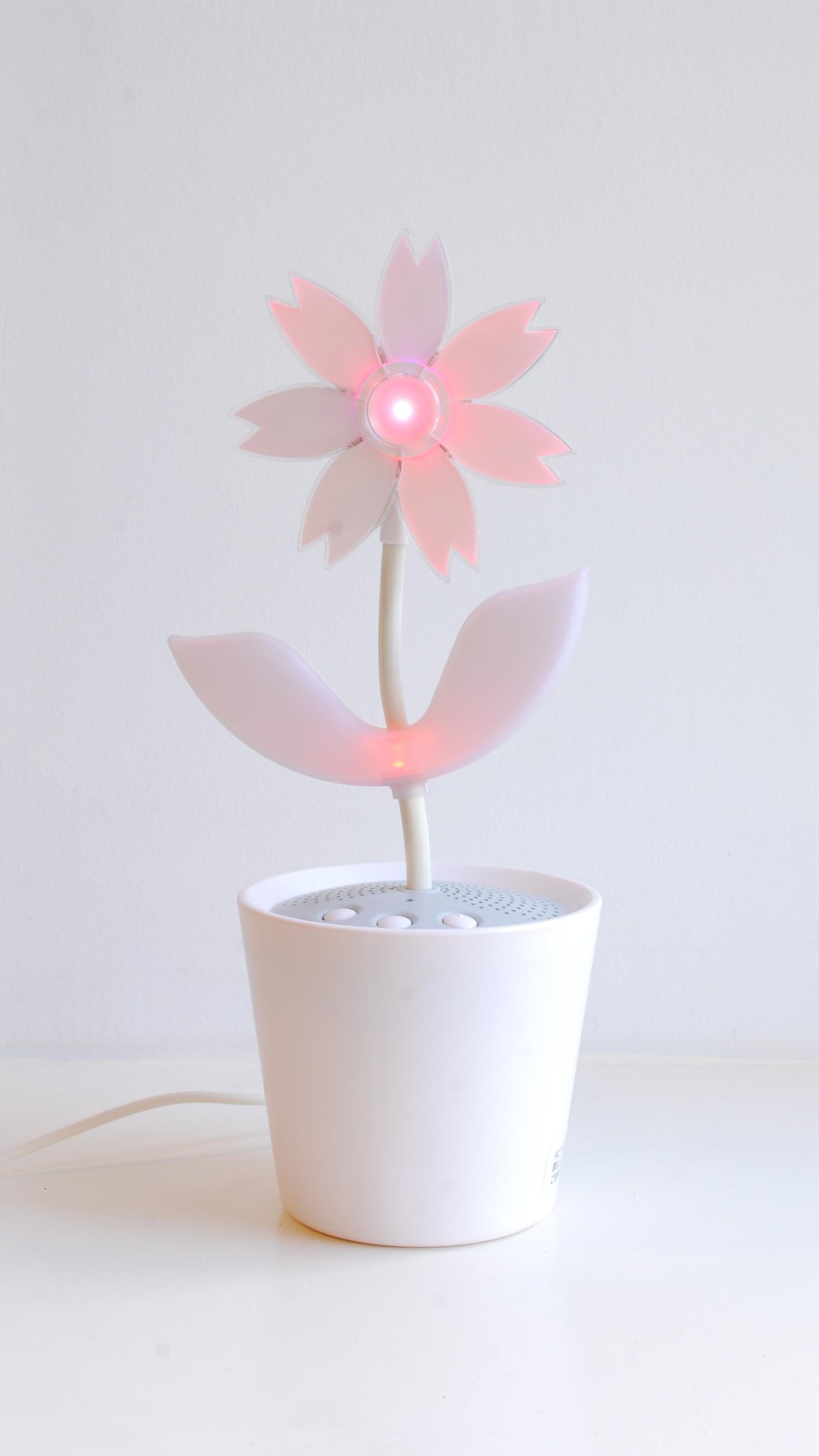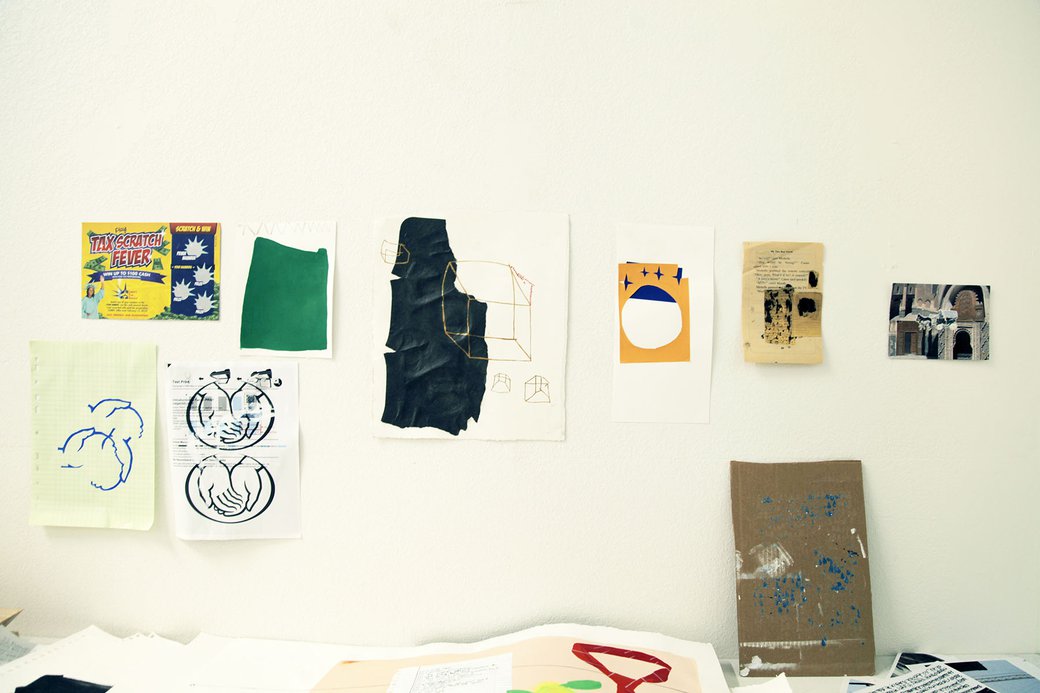Faculty spotlight: Power shifter Allison Yasukawa
CCA’s director of multilingual art and design pedagogy describes how sharing the responsibility of communicating means language is an active and responsive process.

Allison Yasukawa, White, 2017. Audio from an online pronunciation tutorial, dancing flower. Photo by Mark Klassen.
Interdisciplinary artist Allison Yasukawa joined CCA faculty in the fall of 2020 as associate professor in the First Year Core Studio program and director of multilingual art and design pedagogy. She teaches interdisciplinary practices to multilingual art and design students, using humor and disruption to shake things up. Yasukawa, who has exhibited her artwork and presented on her teaching practices internationally, holds an MFA in studio arts and an MA in TESOL (teaching English to speakers of other languages) and applied linguistics from the University of Illinois at Chicago.
She also facilitates critical art education and language justice among her colleagues by offering trainings in multilingual art and design pedagogy. Her teaching style builds on what is already accessible to students, and then it makes clear what is being left out.
Yasukawa’s work—both in the classroom and the studio—defies expectations and disarms the status quo. “As a little bit of a troublemaker,” she says, “in my art practice I like to look at those points where people are pushing back against expected roles and conventional systems—this kind of pushback happens all the time, but I think it’s often ignored or undervalued.”
Yasukawa wants her work to land “somewhere between a knowing smile and a side-eye smirk,” she says. “That’s my goal in life—I aspire to be a trickster!”
CCA is a community with multilingual students, in multilingual classrooms, in multilingual spaces. For both faculty and students, Yasukawa identifies similarities between teaching art, teaching a language, and learning how to talk about art and language. She says we can think about language—like we think about making—as action, rather than a thing we produce. She calls this “languaging” art and design.
The following conversation took place over several Zoom calls in December 2020.
Q+A with Allison Yasukawa

Allison Yasukawa’s studio.
Q. What do you do at CCA—what is your role now and what could it be in the future?
A. I teach in the First Year Core Studio program and I’m also the director of multilingual pedagogy for art and design. This second part of my job means that I work on larger collegewide projects about language, language teaching and learning, and multilingualism—specifically about their relevance to art and design. I spend a lot of time thinking and talking about what our ideas about language are, where and how they are helpful to us, and where and how they might need to change.
My goal is to expand the knowledge base about language so that faculty are more prepared to work with multilingual students and more prepared to approach their teaching from what I would call a multilingual ideology that’s not about multilingual students missing something or being behind, but about all the ways that they’re showing up.
Q. How do you help students feel like they can let down their guard and simply be themselves?
A. This is such an important question! In art and design classes, students are repeatedly told that they need to “step out of their comfort zones” when they’re making work, but there are a lot of assumptions that go unspoken in this statement, specifically about who and what is valued. For example, what needs to be in place for students—all students—to feel secure enough to take risks in the first place? Like, do the students feel both supported and appropriately challenged to try something that’s new to them, or does just being in the class—as it is—feel like a big risk? Or, what are things like experimentation and failure allowed to look like in the class and what are they not allowed to look like?
Q. What are some of the hidden barriers to taking risks that students may feel challenged by?
A. [Artist] Allan deSouza has a great way of talking about these kinds of hidden values and how they make their way into discussions of making and risk-taking. In his book, How Art Can Be Thought: A Handbook for Change, he’s talking about people’s resistance to using gender-neutral pronouns and says, “Faculty always demand of students, and of themselves as artists, that they think outside the box or that they think and act creatively. What could be more boxed in and uncreative than those most ingrained gender values that infect our everyday speech?”
So, how we define what’s even on the table to take a risk about versus what people insist on reinforcing or maintaining that’s beyond, or protected from, risk is central to these conversations.
“That’s my goal in life—I aspire to be a trickster!”
Q. You’ve talked about the idea of linguistic imperialism. What is it, and how do you talk about things like imperialism with first-year students just entering a degree program?
A. Linguistic imperialism is about how language and power are related. It’s one language being imposed on other languages or speakers. I address these ideas with students through their own experiences with language and the practical needs that they have. I always want to provide examples that are relevant to the contexts of the learners that I’m working with. Whether it’s BFA first-year students or faculty who have been teaching for a long time, I want to situate the content within a context that makes sense to them.
For example, for a lot of students, one of the most immediate concerns (whether they’re undergraduate or graduate students) is, “I have to read this stuff and it’s really hard and I don’t understand everything.” Or, “I’m in this class and people are saying all these things I can’t understand.” It’s about the communicative burden; they feel the full responsibility of the communicative burden—that it’s only their fault for not understanding and only their responsibility to fix it, when this is absolutely not true.
One of the things that I’ll do—for example, with reading—is I’ll say, “OK, I absolutely understand what you’re talking about. What if we do a thought experiment? What if you shifted your thinking to focus not on what you don’t understand, but on what you do understand?”
What faculty generally want students to do in a class is to respond to something. It doesn’t have to be that students understand everything on the 30 pages, or whatever they’re reading. But students can look for these moments of connection and start from that.
If it’s about reading, it’s not that the author is the ultimate authority. This is the expectation that students are only there to receive knowledge, like Paulo Freire’s banking model of education—that students are all just these cups waiting to be filled up with smart ideas from other people. That’s not true. Students can and should question, interpret, and debate right along with the author.
“Students can and should question, interpret, and debate right along with the author.”
Q. How does your own artistic practice inform your teaching?
A. The work that I’m doing in multilingual student art and design education really comes out of my studio practice. I’ve always had an interest in communication and the ways that power dynamics can shift in the course of an interaction. When we speak to each other, we’re not locked into singular relationships of control, domination, or subservience; these relationships can develop and change through the communication process. I’m interested in how power moves through an interaction. I’m interested in what the message is on the surface and what’s hidden underneath.
If we’re thinking globally about the communicative role of language in artmaking and design work, it’s about how we can use the tools, materials, and forms of whatever we’re working in to communicate something. Learning a language shares so many similarities with developing as an artist or designer. Because core to both of them is figuring out what it is that you want to say and how you can use the resources available to you to say it.
Pursue your creative practice within a supportive community





